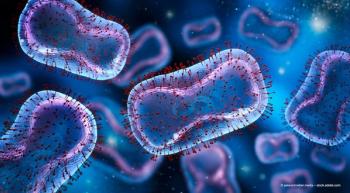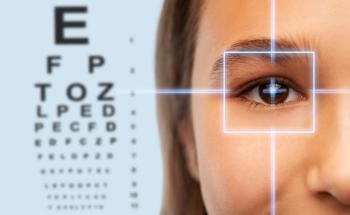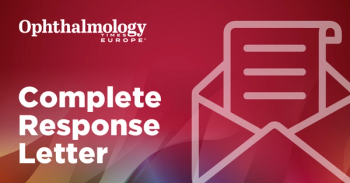
Diagnosing types of dry eye in patients with autoimmune disease
Ayano Yoshimura, MD, PhD, and colleagues from the Department of Ophthalmology, Hyogo Medical University, Hyogo, Japan, conducted a study to investigate the characteristics of dry eye disease in patients with autoimmune diseases. The results indicated that the type of dry eye was that with a short fluorescein breakup time (FBUT) in more than half the dry eyes associated with autoimmune diseases in the study.1 Fumi Gomi, MD, PhD, was the senior author of the study.
The investigators explained that many studies have reported that patients with autoimmune diseases have ocular manifestations as well as the well-known systemic effects. “Dry eye is a common manifestation in autoimmune disease,2-4 and Sjögren syndrome (SS) is a typical autoimmune disease that causes aqueous-deficiency type of dry eye, with its diagnostic criteria including a Schirmer test value of 5 mm or less and keratoconjunctival epithelial disorder,5" the authors explained.
They cited a report by the Asia Dry Eye Society that proposed new definitions and diagnostic criteria for dry eye,6 with short break up time (BUT) type of dry eye7-9 that is characterised by an abnormal BUT and severe symptoms, despite a normal tear volume and minimal ocular surface epithelial damage.
Alongside the new definitions, a new movement in Japan is afoot, which is promoting new concepts for the diagnosis and therapy of dry eye, referred to as tear film-oriented diagnosis (TFOD) and tear film therapy (TFOT).6,10,11 Regarding the latter, Yokoi et al classified FBU patterns (FBUPs) into five types11,12 for diagnosing the insufficient component of the ocular surface causing tear film breakup, classifying dry eye subtypes and selecting the best available topical therapy for dry eye.
Although dry eye research from the perspective of TFOD and TFOT is progressing in Japan, only a few reports have classified dry eye using TFOD associated with autoimmune diseases, according to the authors, which was the focus of their study.
Retrospective clinical study investigates autoimmune disease and dry eye
The study under discussion included 252 eyes (252 patients; 240 women; mean age, 59.8 years) with autoimmune disease and dry eye. Patients were divided into those with primary SS, those with secondary SS and those with autoimmune disease without SS.
The mean FBUT of all cases was 2.7 ± 1.6 seconds. The van Bijsterveld corneal score was 0.8 ± 0.8, the conjunctival score was 1.5 ± 1.7, and the Schirmer 1 test value was 8.4 ± 8.2 mm. Among all cases, the FBUP was the tear-deficiency type of dry eye in 43% of eyes (area, 11%; line, 32%) and the short FBUT type of dry eye in 57% (dimple, 31%; spot, 10%; random, 16%). The conjunctival scores were significantly positively correlated with anti–SS-A and anti–SS-B antibody titers in the primary and secondary SS groups, the investigators found.
Interestingly, the authors explained that based on the current literature, they had expected that most of their cases would be in the SS groups and would have the aqueous-deficient type of dry eye. However, they found that half the SS groups had the short FBUT-type of dry eye.
This led them to advise clinicians that in patients with autoimmune disease, “it is necessary to suspect the presence of short FBUT type of dry eye, even without the presence of tear volume loss. If dry eye can be diagnosed by measuring the FBUT and observing FBUPs, it should be possible to use this information to contribute to improving the quality of life of patients with autoimmune disease.”
The authors concluded, “Patients with autoimmune diseases can develop dry eye with or without a diagnosis of SS, and the short FBUT type of dry eye is common and should be diagnosed and treated according to TFOD and TFOT.”
References
Yoshimura A, Hosotani Y, Masuda N, Gomi F. Characteristics of dry eye associated with autoimmune diseases. Jpn J Ophthalmol. 2025;69:188-195. Accessed April 22, 2025.
https://doi.org/10.1007/s10384-025-01172-9 Patel SJ, Lundy DC. Ocular manifestations of autoimmune disease. Am Fam Physician. 2002;66(6):991-998.
Kemeny-Beke A, Szodoray P. Ocular manifestations of rheumatic diseases. Int Ophthalmol. 2020;40:503-510.
Guannan H, Long S, Xia H, Dong W, Shaozhen Z. Clinical characterisation and cytological study of dry eye in patients with autoimmune disease. J Pak Med Assoc. 2018;68(3):353-358.
Fujibayashi T, Sugai S, Miyasaka N, Hayashi Y, Tsubota K. Revised Japanese criteria for Sjögren’s syndrome (1999): availability and validity. Mod Rheumatol. 2004;14(6):425-434.
Tsubota K, Yokoi N, Shimazaki J, et al; Asia Dry Eye Society. New perspectives on dry eye definition and diagnosis: a consensus report by the Asia Dry Eye Society. Ocul Surf. 2017;15(1):65-76.
Toda I, Fujishima H, Tsubota K. Ocular fatigue is the major symptom of dry eye. Acta Ophthalmol (Copenh). 1993;71(3):347-352.
Koh S, Maeda N, Hori Y, et al. Effects of suppression of blinking on quality of vision in borderline cases of evaporative dry eye. Cornea. 2008;27(3):275-278.
Shimazaki-Den S, Iseda H, Dogru M, Shimazaki J. Effects of diquafosol sodium eye drops on tear film stability in short BUT type of dry eye. Cornea. 2013;32(8):1120-1125.
Yokoi N, Georgiev GA. Tear film-oriented diagnosis and tear film-oriented therapy for dry eye based on tear film dynamics. Invest Ophthalmol Vis Sci. 2018;59(14):DES13-DES22.
Yokoi N, Georgiev GA. Tear-film-oriented diagnosis for dry eye. Jpn J Ophthalmol. 2019;63(2):127-136.
Yokoi N, Georgiev GA, Kato H, et al. Classification of fluorescein breakup patterns: a novel method of differential diagnosis for dry eye. Am J Ophthalmol. 2017;180:72-85.
Newsletter
Get the essential updates shaping the future of pharma manufacturing and compliance—subscribe today to Pharmaceutical Technology and never miss a breakthrough.












































